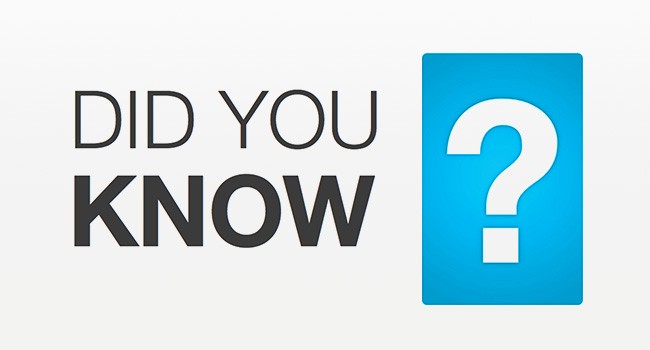What You Need To Know
Post on: 3 Июль, 2015 No Comment

A recent New York Times article on the mistakes young workers are making in saving for retirement through 401(k)s and some advice on what they should change. Financial Caculators
Figure out where you stand in saving for retirement — and how long your money will last. How Much You Need to Set Aside
Experts on retirement saving talk about the crisis facing middle class Americans.
How many Americans working in the private sector have retirement plans?
Half of America’s private sector workforce are not covered by any retirement savings plan; their retirement will be anchored only by Social Security and whatever they have managed to save on their own.
The other 50 percent have one of the two main employer-sponsored retirement savings strategies: a traditional lifetime pension or a 401(k)-style investment plan. Today, twice as many workers have 401(k)s than have lifetime pensions, a complete reversal from 25 years ago, according to David Wray of the Profit Sharing/401(k) Council of America.
What is the difference between employer-sponsored lifetime pension plans and 401(k) plans?
With the old-fashioned lifetime pension, a retired employee receives a set amount of money every month for the rest of his or her life. The amount is based on how long the employee has worked at the company, or based on a percentage of the final salary before retiring.
With a company-sponsored 401(k) plan, employees get an investment account into which they can save pre-tax dollars for retirement. The employee decides how much to save and how to invest it. Many companies match the employee’s contributions — sometimes 50 cents on the dollar, sometimes dollar for dollar or more — up to a certain percentage of the employee’s income. When the employee retires, the 401(k) account pays out a lump sum, and it is up the retiree to decide how to spread his money out to cover his or her retirement years.
What are the advantages of 401(k) plans for employees?
Employees’ contributions go directly into the employees’ 401(k) saving plan before being taxed, reducing taxable earning and thus income taxes at the end of the year.
Many companies match employees’ contributions. The amount of the match varies from company to company.
Employees can take their 401(k) retirement savings from job to job, rolling it over into another 401(k) or into an Individual Retirement Account (IRA).
401(k)’s offer employees the ability to invest as they choose — during the stock market boom of the 1990s, many 401(k) investors reaped the benefits.
What are the advantages of 401(k) plans for companies?
401(k) plans offer companies lower and more predictable costs:
Pension plans cost companies six to eight percent of payroll and 401(k)-style plans cost one to three percent, according to benefits expert Brooks Hamilton .
Because 401(k)’s give employees one lump sum at retirement, rather than a lifetime benefit, the cost to the company doesn’t increase as life expectancies lengthen.
What are the pitfalls of 401(k) plans for employees?
The move from lifetime pensions to 401(k) plans means employees now bear much more of the cost — and risk — of saving for retirement.
Instead of the certainty of a pension check every month for the rest of one’s life, employees with 401(k)s are on their own. They must educate themselves about how much they should be regularly saving for retirement. Then they must learn how to invest the money wisely (see below) so that at the end of their working years they’ll have enough for a comfortable retirement, which may last into their eighties and beyond.
What are the major mistakes workers make managing their 401(k)s?
They don’t participate. Of all employees eligible to participate in a company-sponsored 401(k) plan, 30 percent choose not to.
For those who participate, many start too late, and when they do start, their rate of saving is too low. (According to the lastest report from the Federal Reserve, the average family’s account balance in a 401(k) is only $29,000.)
Half the people with 401(k)s cash them out when they change jobs, despite the tax penalties for doing so. They use the money for bills, or on a down payment for a house, a vacation, education expenses, etc, instead of rolling the money into an IRA or another 401(k). It means the money’s not there when they come to retirement.
401(k) investors aren’t aware of the fees and costs charged by the managers of 401(k) plans (usually mutual fund firms). These fees and costs compound over time and eat up a huge chunk of the employee’s investment returns. John C. Bogle, founder of the Vanguard mutual fund firm, says that over several decades, this adds up to 80 percent of returns going to the system’s managers, only 20 percent to the investor (read how Bogle got to these percentages), and Bogle offers advice on how to avoid this.
Editor’s Note: For a breakdown of the tyranny of compounding costs over the long term, see this table .
Many employees don’t know the basics of how to invest wisely. There’s a wealth of information on the Internet and countless books and magazines freely available at libraries. The basics of investing include:
Don’t try to outguess the market by pulling money out or putting it in just because the market is suddenly up or down. The long-term trend for the market is up; buying and holding a good stock generally pays off.
Diversify investments to spread the risk. Put portions of the money into stocks, bonds, money market funds. Within these categories there are additional choices to help further diversify, for example, corporate bonds, government bonds, municipal bonds.
Avoid keeping 401(k) money in a company’s default investment scheme. It’s usually a low-risk fund with a correspondingly low rate of return.
Be wary of investing a large percentage of your 401(k) in your company’s stock. If your company falters, you could lose your job and your nest egg at once.
Finally, many employees spend their 401(k) money too quickly when they retire. If they run out before the end of their lives, they will be left with nothing but Social Security and any other savings they might have.

What do experts say should be the combined employee/employer amount put into a 401(k) each year?
Fifteen to 18 percent of salary, every year, for 30 years is the recommendation from most experts. Most advise having roughly ten times annual pay accumulated in a 401(k)-style plan by retirement time.
Today, most workers nearing retirement have two to three times annual pay saved up in retirement accounts. That amount will allow them to maintain their pre-retirement standard of living for about seven to eight years, at a time when life expectancy past retirement age is 17 years.
What can be done to make 401(k)s work well?
If many employees can’t save and invest wisely on their own, 401(k) proponents suggest that employers, or the mutual fund companies which manage the plans, should handle saving and investing for employees.
Some companies are beginning to enroll their employees in 401(k) plans automatically and to take the maximum allowable contribution out of their paychecks. Instead of defaulting to a low-risk investment, companies are putting the employee’s money into investments tailored to the employee’s age: starting with riskier but higher-yield funds for younger workers and shifting towards safer but less profitable investments as workers approach retirement.
Several experts suggest investing in index funds in order to capture a market return and have lower fees.
Some companies have proposed tougher tax penalties or even prohibitions on withdrawing 401(k) funds early. And automatically converting 401(k) payouts into annuities would prevent retirees from outliving their savings.
What happens when companies don’t have enough money to fund their workers’ pensions?
The Pension Benefit Guaranty Corporation (PBGC), the federal insurer of private sector pensions, takes over a failed pension plan and pays pensions to retirees up to the legal cap set by Congress. When this happens, sometimes the payout formula from the PBGC is lower than the company’s pension terms.
The most common way for corporations to shift responsibility for paying workers’ pensions is through Chapter 11 bankruptcy. This allows a company to cancel its obligations, including its pension plans, and restructure and emerge to continue business. More than a million workers and retirees have been affected by these bankruptcies — workers in industries like the airlines and steel where lifetime pensions are common.
How bad is the problem of corporations underfunding their pension trust funds for employees?
More than 18,000 companies have underfunded their pensions. According to Bradley Belt. out-going director of the PBGC, if every company in America decided to terminate their plans and settle existing obligations, the deficit would total $450 billion. While this is an unlikely scenario, another measure of the problem is the financial health of the PBGC itself, which currently is running a $23 billion deficit. The bulk of that deficit has developed in the past five years as more and larger companies like United Airlines have unloaded their underfunded pension plans on the PBGC. The PBGC is financed by insurance premiums paid by corporations. Some fear that unless Congress acts to increase these premiums, the PBGC may eventually require a taxpayer bailout.
Healthy companies are also freezing pension plans. How does that work?
Healthy companies can’t terminate pension plans without incurring penalties, but they can freeze them. Freezing a pension plan means that a company stops offering the plan to new hires, and current employees stop accruing benefits. A mid-career employee will be entitled to whatever benefits that have been accrued up to the pension freeze. IBM, Hewlett Packard and Motorola are some of the blue chip companies that have frozen pensions. Most have replaced frozen pensions with 401(k)s.
What’s the government doing to address the problem of corporations underfunding their pension trust funds?
In August 2006 President Bush signed the Pension Protection Act of 2006. The law requires companies to fully fund their pensions over several years and increases the premiums corporations pay to the federal pension insurer. However, the proposed legislation doesn’t prevent companies from freezing lifetime pensions, and it contains several provisions that might actually encourage companies to swtich to 401(k)s.














